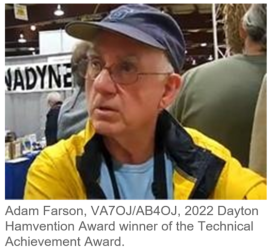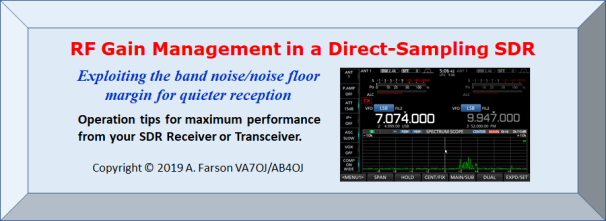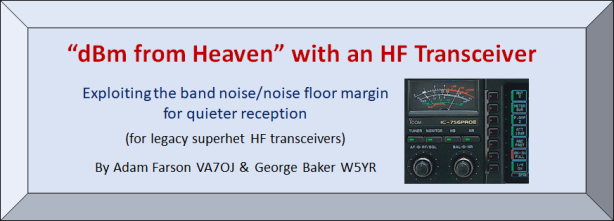ADAM'S ALLEY
Transceiver Reviews by Adam Farson, VA7OJ / AB4OI
Technical Achievement Award
Adam Farson, VA7OJ/AB4OJ, of West Vancouver, B.C., received the Technical Achievement Award for his dedicated professional work with RF and telecommunications engineering issues and innovation. He has been a ham since he was a teenager.
Best known to the amateur radio community for his development of multiple sources of technical support for Icom radios, Farson started an Icom technical support net on 20 meters in the 1980s. He and came to know several senior Icom Japan engineers while living in, and traveling around, Japan while working. With each week's net, Farson helped hams solve challenging technical and logistical issues.
Farson has spent 3 decades creating an online resource for HF radios. His website -- a repository for highly technical information on Icom and other HF transceivers and amplifiers -- is now one of the most widely cited internet resources.
He independently performs measurements on nearly all new radios, including noise-power ratio, a measure he developed. His work includes producing the only data radio hobbyists have, which clearly delineates how modern software-defined radios (SDRs) perform across the spectrum of band noise levels. Farson has written multiple articles for technical and amateur radio journals. Recently, he penned a multipart series on modern HF solid-state amplifier design principles.
Today: Adam Farson is a retired telecom engineer who enjoys evaluating the latest radio technology. His reviews are highly technical. He coordinates closely with Rob Sherwood and their feedback to the transceiver OEMs helps improve the radios we all use.
Adam has especially focused his attention on ICOM transceivers and has full test reviews on:
IC-7000 / IC-718 / IC-7000 /IC-7200 / IC-7410 / IC-756Pro/Pro2/Pro3 / IC7600 / IC-7700
IC-7851 / IC-9100 / IC-R7100 / IC-R8500 / ID-5100
Adam has devised a special testing medology using "NPR".
NPR stands for "Noise Power Ratio" and uses notched noise to evaluate dynamic receiver performance.
Before diving into reading Adam's transceiver tests and reviews, it is a good idea to first read about the test method he is using.
See: Noise Power Ratio (NPR) Testing of HF Receivers
For many of us, the complexity of Adam's NPR test is beyond our technical understanding. I'm sure the engineers will have no problem understanding it.
At the end of the technical part, Adam also explains his results in clear English (for the rest of us).
EXAMPLE (IC-7851) :
DR3 (3rd order IMD dynamic range, Test 4) is 15 - 20 dB higher than that of earlier designs. Again, this is among the highest I have ever measured in a superhet. The serious contester or DX'er will no longer be handicapped by IMD products or phase noise in his own receiver.
Transceiver Reviews:
See: List of User Reviews & Test Reports
HOT LINK TO THE REVIEW OF THE NEW IC-7300
HOT LINK TO THE REVIEW OF THE NEW IC-7610
HOT LINK TO THE REVIEW OF THE NEW IC-9700
NOTE: Both Adam Farson and Rob Sherwood are now including TX phase noise as part of their transceiver reviews. Their test results are being coordinated with those of ARRL Lab. HOPEFULLY this will launch a new age of clean transmitters.
Operating an SDR Radio is Different
Adam gives us tips on how to set up an SDR radio for maximum performance and enjoyment. Click on the Button below:
Operating Legacy Superhetrodyne HF Transceivers
The trick is to ensure that the AGC responds only to the signal, not to band noise:




























